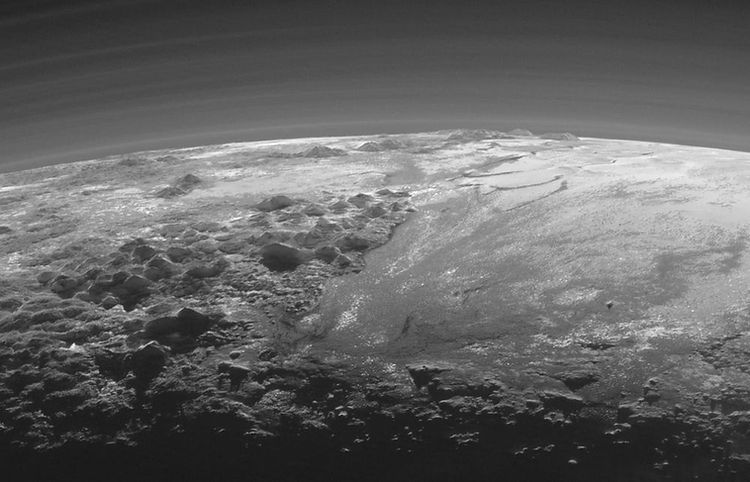
PLUTO (DWARF PLANET)
PLUTO (DWARF PLANET)
For many years, from its discovery in 1930, until 2006, Pluto was considered the ninth planet in the Solar System. After the discovery of several other objects in the outer solar system of similar size, the term "Planet" was formally defined. Pluto was re-classified into the newly formed category of Dwarf Planet.

The almost full disk of Pluto, seen more clearly than ever before.
Image credit: New Horizons, NASA.
Norgay Montes (Mount Norgay) and Hillary Montes (Mount Hillary) with many other mountains, and Sputnik Planitia (Sputnik Plain), with atmospheric layers clearly visible.
Image credit: New Horizons, NASA.


The Sputnik Planum region of Pluto, is believed to consist mainly of Nitrogen ice.
Image credit: New Horizons, NASA.
Pluto Facts
Diameter: 2,374 kilometres (2 thousand, 374 kilometres), or 1,475 miles (1 thousand, 475 miles)
Distance from the Sun: 5,906,380,000 kilometres (5 billion, 906 million, 380 thousand kilometres), or 3,670,000,000 miles (3 billion, 670 million miles)
Rotation period (day): 6.387230 Earth days (= 6 days, 9 hours, 17 minutes, 36 seconds)
Orbital period (year): 248 Earth years or 90,560 Earth days
Average surface temperature: -229 degrees Celsius (-380 degrees Fahrenheit)
Moons: 5 in total, namely, Charon, Styx, Nix, Kerberos and Hydra.

Pluto and its atmosphere, back-lit by the Sun.
Image credit: New Horizons, NASA.

Earth and the Moon, as seen between Saturn's rings.
Image credit: Cassini, ASI/ESA/NASA.
